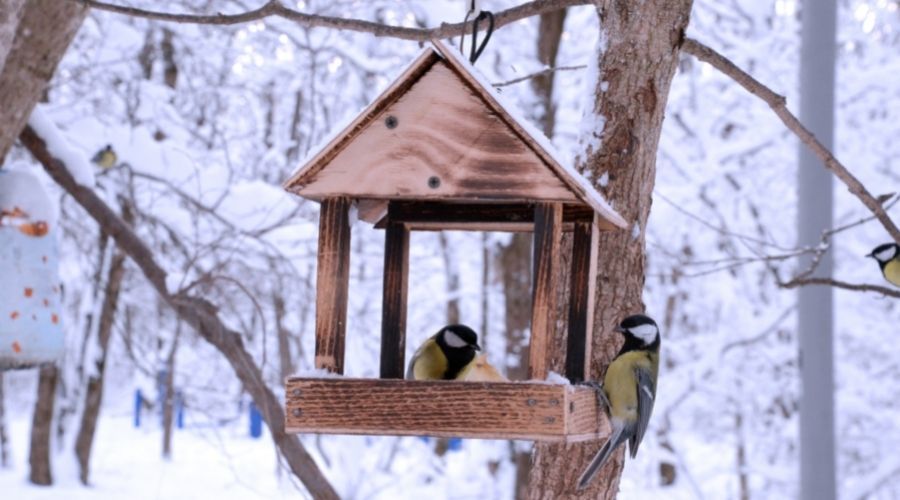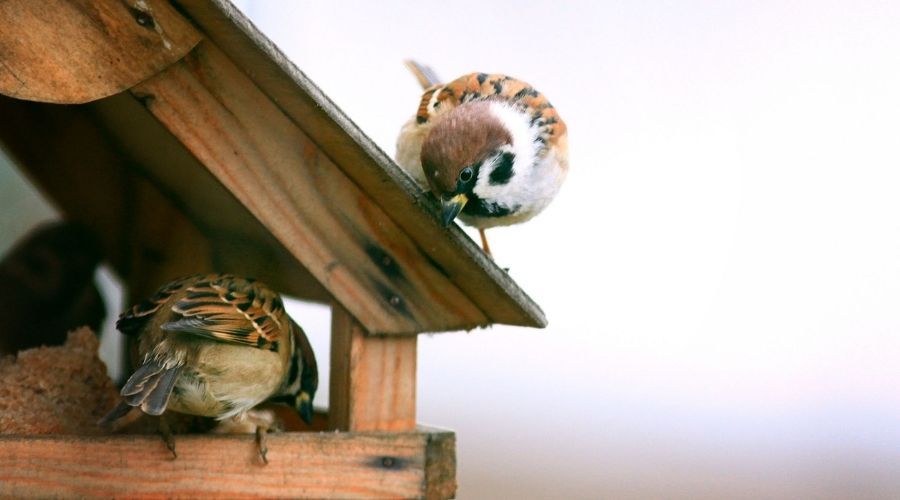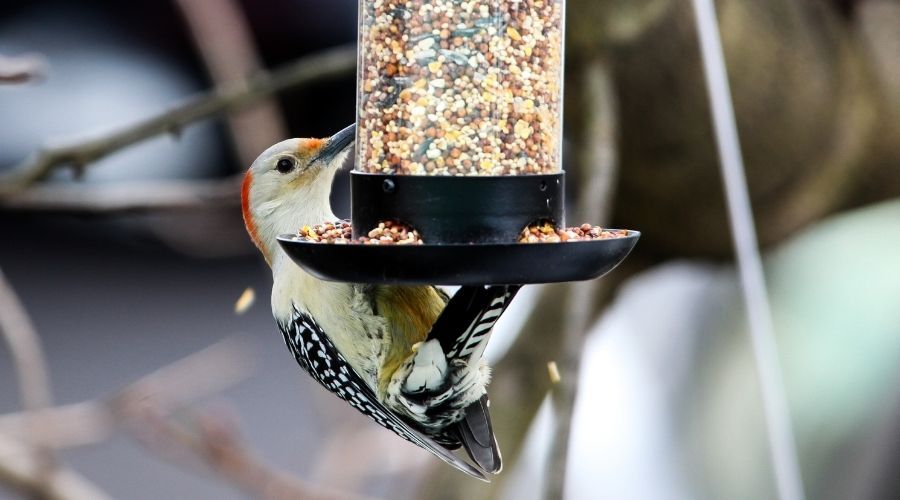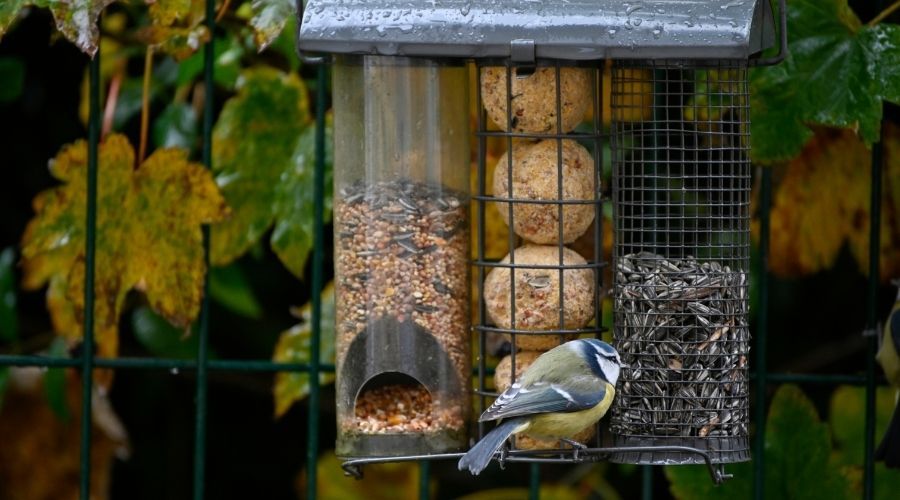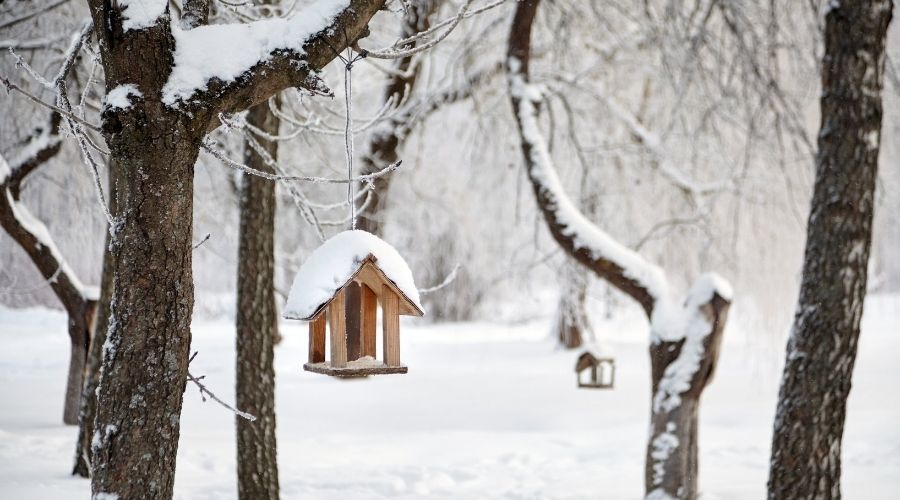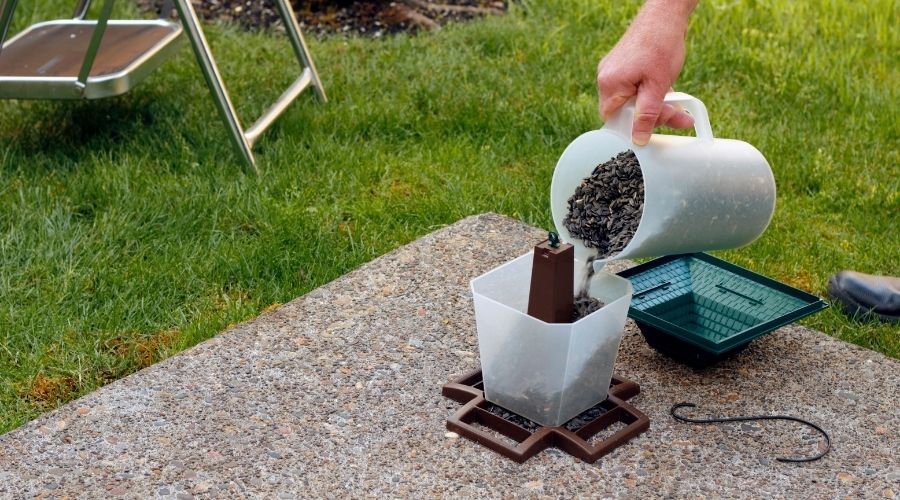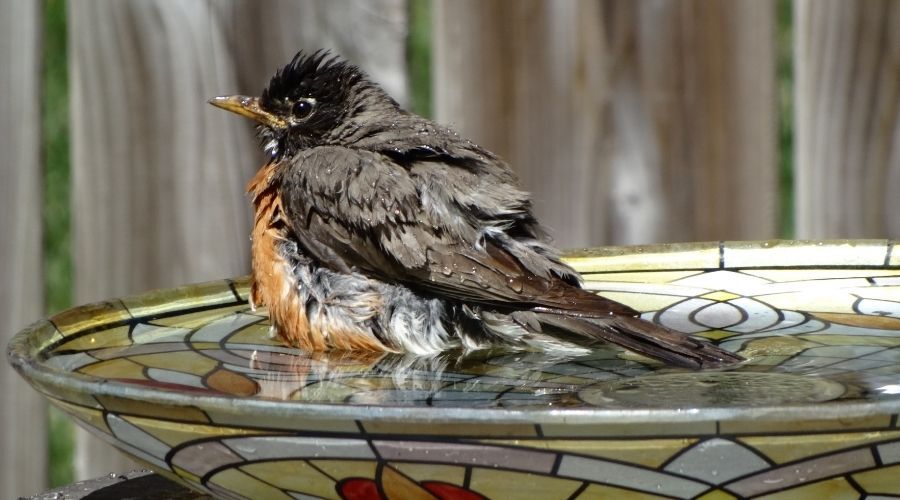You may be surprised to learn that there are many different factors to consider when choosing a bird feeder. This includes everything from the types of birds you will be feeding, the type of food you are providing, the potential for unwanted visitors, and the weather in your area.
Often people focus solely on the aesthetic appeal of different feeders, viewing them as more of an accessory for their yard than a functional way to provide food to the birds living in the area. By shifting this mindset and focusing on the features each feeder provides, you will be able to identify which feeder will stand strong and continue to function over time, saving you both time and money.
If providing for your backyard birds is a priority, this guide is for you! We’re going to look at exactly what you should consider when shopping for your next bird feeder.
You Will Need
- Bird Guide Book (Optional)
- Hanging hardware and/or mounting post
- Squirrel baffle
- 10% bleach solution
- Bird food
- Birdbath (Optional)
Step One: Research the Types of Birds in Your Area
Image Credit: Kichigin on Canva
The first and most obvious step to choosing the right feeder is to learn what birds are even in the area that you may wish to attract. You may love the idea of feeding Blue Jays, for example, but if they aren’t found in your area of North America, no feeder is going to magically attract them.
A great free resource for researching different birds and the regions that they populate is the Audubon Society Guide to North American Birds. Simply select a region and hit ‘search’ to find a list of birds that may be in your area. If you prefer a physical book when doing your research, you can also use a bird guide book to learn more about the different species of birds that may be visiting your new feeder.
Step Two: Identify the Food Types for Your Chosen Birds
Image Credit: Miro Vrlik Photography on Canva
After you know what types of birds that you are hoping to attract to your outdoor feeder, it’s time to learn more about what bird food they are most attracted to. This could include different seed types, suet cakes, fruit, or even nectar. This is important as it will have a direct impact on the type of feeder that you are going to need. If you are trying to feed a bird that is attracted to suet such as a woodpecker or starling, you will need to purchase a bird feeder that can accommodate suet cakes. It should be noted that there are many birds that will eat more than one type of food. However, there is usually one type that they find most attractive if you are looking to target just one or two species.
Step Three: Explore the Different Types of Bird Feeders
Image Credit: Michel VIARD on Canva
Using the knowledge that you have gathered in steps one and two, it’s time to look at the different types of bird feeders that are on the market. Each type has its pros and cons, meaning that there is no one ‘right’ choice. Instead, you need to choose the best choice for your location and needs. Some of the most common types that you will find on the market include hopper or house feeders, tube feeders, window feeders, tray feeders, suet feeders, and nectar feeders. There are even combination feeders that incorporate two or more of these options into a single feeder.
Hopper or House Feeders
Often referred to as house feeders due to their appearance, hopper feeders hold birdseed in a central compartment with a roof over top, offering protection from rain and snow. If moisture does make its way into the feed, be sure to clean your feeder immediately to avoid mold growth. These feeders can be purchased in a size large enough to hold the seed needed for multiple days, making it a great choice for those that prefer a low-maintenance solution. They are popular among birds known as ‘feeder birds’ including cardinals, jays, sparrows, chickadees, and finches. Be warned! They are also VERY popular with squirrels.
Tube Feeders
These feeders are long, narrow tubes that house your birdseed with feeding ports along the sides. The seed is contained and therefore protected from the elements, however, you should empty the tube entirely before each fill to make sure that older seed isn’t left to mold in the bottom. They can be purchased with perches below the port for birds to rest while feeding, or with perches above the port for those that prefer to hang and eat. Pay careful attention if choosing a tube feeder to the size of the perch as not all feeders are able to support the larger species such as jays and grackles.
Window Feeders
Window feeders are small plastic feeders that are hung from a window of the house using suction cups. For us, they are a great option as we can watch the birds up close and personal while they eat. They are also easy to fill and clean. However, they are smaller in size, limited on the weight that they can support, and they require the birds to stand on the seed while feeding, meaning that they can collect bird droppings.
Tray Feeders
As the name suggests, tray feeders are a large flat tray or platform that holds your bird food, providing plenty of space for your birds to land and enjoy. Unfortunately, these feeders offer little or no protection against the elements, which can get messy if you don’t clean them regularly. In addition to the moisture, they can also collect bird droppings as birds are eating. These are a great choice for offering fruit and are also able to accommodate larger birds than your other feeders may handle. If you are looking to attract ground feeders like doves and blackbirds, you can place your feeder at a lower height.
Suet Feeders
Made from wire mesh or plastic-coated wire, these feeders are designed to hold suet cakes, attracting chickadees, jays, starlings, nuthatches, and woodpeckers. They often resemble a cage, with the suet in the center, allowing the birds to grip onto the wire and perch or hang while feeding. If you plan on using a suet feeder in the colder winter months, you will want to ensure that you are choosing one with a plastic coating to reduce any risk of injury or discomfort from the cold metal.
Nectar Feeders
These feeders are most often associated with hummingbirds, providing the sweet nectar drink that they need to survive. However, they aren’t the only birds that enjoy that sweet taste. Other birds that you may find enjoying the feeder include orioles (the second most common), house finches, warblers, woodpeckers, goldfinches, and chickadees. Make sure to clean your nectar feeder regularly due to the sugar content.
Step Four: Decide Where to Hang or Mount Your Feeder
Image Credit: mikhailsabela on Canva
Now that you’ve selected the best option from the wide variety of feeders on the market, it’s time to consider where you are going to hang or mount your feeder to best accommodate your feathered visitors. This will also have an impact on your ability to watch the hungry birds as they eat if that’s something that you are looking forward to, as well as the likelihood that you are going to be dealing with unwanted guests.
The hanging method that will require the least hardware or preparation is to simply hang your bird feeder from the branches of a tree. However, this is also the option that will invite any nearby squirrels to enjoy a feast. They are extremely talented at balancing, even on thinner branches, or jumping from tree trunks to reach a waiting meal.
Kits are available to convert your bird feeders to pole-mounted feeders. This will allow you to place a feeder anywhere you like in the yard without worrying about finding a tree, however, it’s not free from pesky squirrels unless you incorporate some additional accessories. Squirrel baffles work to create an additional barrier, preventing squirrels from having easy access to your feeder.
Avoid placing your feeder anywhere out in the open where your birds may feel uneasy due to the risk of predators. Instead, opt to be closer to some trees or shrubs where they can hide safely, watching for the best moment to fly over, feed, and return to their hiding place. You should also avoid overly active or noisy locations as this can scare off your feathered friends.
Step Five: Thoroughly Clean Your Feeder Before Filling
Image Credit: Serenethos on Canva
Before adding any food to your feeder, you want to be sure that it has been cleaned thoroughly. This is a process that should be done both before filling your new feeder for the first time as well as on a regular basis moving forward to keep the birds safe. This can be done using a bleach solution made from 10% bleach mixed with hot water. The use of bleach is especially important if when cleaning fruit feeders and nectar feeders that contain sugary foods as well as anytime you have removed spoiled food from the feeder. When you are done washing the feeder inside and out, be careful to dry it thoroughly to keep the seed dry.
Step Six: Add a Birdbath (Optional)
Image Credit: SweetpeaAnna on Canva
Another way that you can help to attract a larger number of birds to your backyard feeder is to add a birdbath somewhere nearby. Birds are drawn to sources of water just as they are to food, both to satisfy their need for a drink as well as for bathing. Your birdbath should be cleaned daily and refilled with clean water to prevent it from becoming a breeding ground of bacteria, making your birds sick. During the winter months, consider using a birdbath heater. This will keep the water from forming ice, continuing to offer fresh water at a time where it may be hard to come by.
Enjoy Your New Backyard Bird Feeder
With so many different types of bird feeders available, choosing one can feel overwhelming. However, the selection process will be well worth it when you can sit back and watch the wild birds in your area enjoying the food that you provide. Backyard bird feeding can be a relaxing hobby, as many bird watchers can attest. It’s a great way for bird lovers to appreciate the beauty of nature and help to support bird conservation efforts by ensuring that there is safe and healthy food available year-round. Remember that you can always save some money and make your own DIY winter bird feeder!

